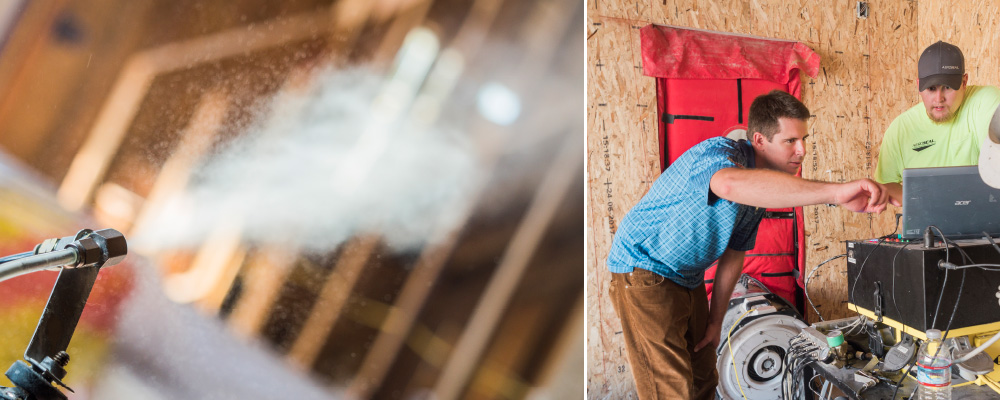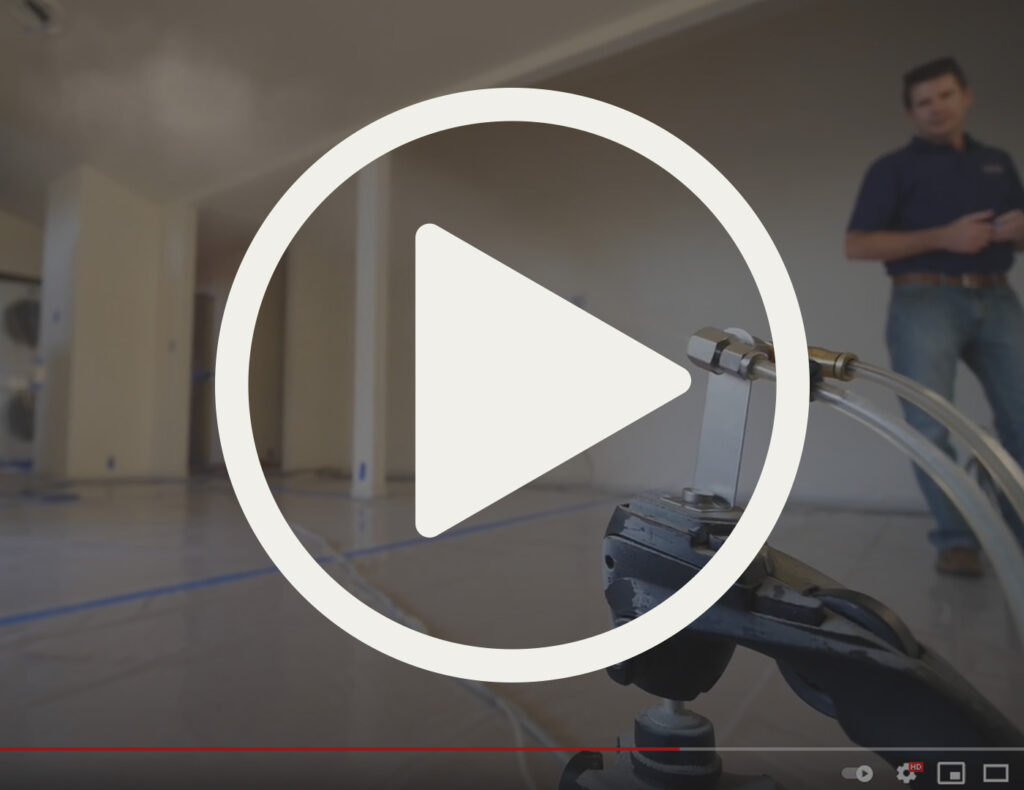
Air leaks in buildings waste energy and can cause moisture and indoor air quality problems. Current methods for tightening building shells have relied primarily on manual sealing methods that are labor intensive and often insufficient.
Since its inception, the WCEC has been developing applications for aerosol envelope sealing to improve sealing effectiveness, reduce labor costs, and improve contractor installation consistency. Former WCEC director, Mark Modera, developed a process for sealing ductwork remotely using aerosol particles while at Lawrence Berkeley National Lab in the 1990s and started a company, Aeroseal.
In 2010, WCEC started to adapt the aerosol sealing process for sealing building envelopes. The process involves pressurizing a building while applying an aerosol “fog” to the interior. As the air escapes through leaks in the shell of the building, the aerosolized sealant is transported to the leaks and seals them as the particles try to escape from the building. The process has proven to be very effective at sealing leaks in building envelopes, consistently showing the ability to seal 80% of available leaks in less than two hours. The process for aerosol sealing of building envelopes was licensed to Aeroseal in 2016,which now provides the service under the name AeroBarrier through a number of dealers across the country.
Current Work
The DOE project sealed 34 homes in California and the Midwest, and also demonstrated a new approach to sealing occupied homes that applies the aerosol from a ventilated attic. The attic insulation was removed prior to installation to give the sealant a path to the leaks on the attic floor. This attic sealing approach was used to reduce the total leakage of three townhouses by 52–57% and required little to no preparation of the home. This outside-in approach can also be used to seal other areas, such as crawlspaces, unconditioned basements, and attached garages. Overall, the project produced average leakage reductions of 53% and 64% for California homes and apartment units, respectively, and 42% and 40% reductions for Midwest homes and apartment units.
Previous Work
- The WCEC is contracted with the Center for Energy and Environment on a project for the DOE Building America Program that is assessing the aerosol sealing process in existing homes. Applying the process in existing homes requires significant preparation to avoid unwanted sealant deposition on finished surfaces. This project will develop protocols for preparing the homes for sealing and determine the effectiveness of the aerosol sealing process in existing homes. The current project focuses on applications during time of tenant change, when homes are temporarily unoccupied and contents are removed from the home.
- The WCEC has worked on a number of projects related to aerosol sealing for the California Energy Commission, the Department of Energy Building America Program, and the Department of Defense ESTCP Program. Project reports and publications are referenced below and range from small scale laboratory testing to applying the process on a production scale with home developers.
RESOURCES
- Automated Aerosol-Sealing of Building Envelopes (Research Report: 2018)
- Building America: Aerosol Sealing of Building Envelopes in New Construction (Presentation Slides: 2017)
- Demonstrating the Effectiveness of an Aerosol Sealant to Reduce Multi-Unit Dwelling Envelope Air Leakage (Research Report: 2016)
- Using an Aerosol Sealant to Reduce Multifamily Envelope Leakage (Research Report: 2016)
- Field Trial of an Aerosol-Based Enclosure Sealing Technology (Research Report: 2015)
- Apartment Compartmentalization With an Aerosol-Based Sealing Process (Research Report: 2015)
- Apartment Compartmentalization with an Aerosol-Based Sealing Process (Case Study: 2014)
- Field Trial of an Aerosol-Based Enclosure Sealing Technology (Case Study: 2014)
- Achieving and Certifying Building Envelope Air Tightness with an Aerosol-Based Automated Sealing Process (Research Report: 2013)
- Laboratory Testing of Aerosol for Enclosure Air Sealing (Research Report: 2012)
Sponsors: Center for Energy and Environment, Department of Energy
Collaborators: AeroBarrier


